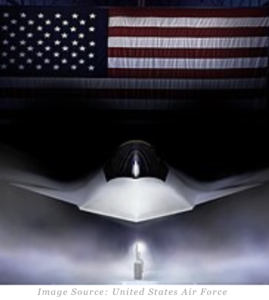Written by Alec Toppenberg
In a landmark decision, President Donald Trump announced on March 21, 2025, that Boeing has been awarded the contract to develop the U.S. Air Force’s next-generation fighter jet, coined the F-47. This initiative, part of the Next Generation Air Dominance (NGAD) program, aims to replace the aging F-22 Raptor and bolster U.S. air superiority amid escalating global threats. The F-47, named in reference to the establishing date of the US Air Force in 1947 while also being a nod to the legendary P-47 Thunderbolt that served the Allies during WWII, is envisioned as a sixth-generation aircraft featuring advanced stealth capabilities, extended range, and the ability to operate alongside autonomous drone wingmen. These enhancements are designed to address emerging challenges, particularly from nations like China, by penetrating sophisticated air defense systems and ensuring dominance in contested airspace. The contract, valued at over $20 billion, marks a significant victory for Boeing, which has faced financial setbacks and production challenges in recent years. The selection of Boeing over competitors like Lockheed Martin has surprised industry analysts, given Boeing’s recent history of delays and lack of recent experience in developing jet fighters, especially stealth aircraft. Air Force Chief of Staff Gen. David Allvin highlighted the F-47’s anticipated capabilities, stating that the aircraft represents a generational leap forward in air superiority. He emphasized that experimental versions have been flying for the past five years, testing cutting-edge concepts and proving the potential to confidently push technological boundaries. Despite the enthusiasm, some experts have expressed skepticism regarding the program’s cost and export potential. Former Air Force Secretary Frank Kendall noted concerns about the high expected cost of up to $180 million per unit and questioned whether U.S. allies would be willing to invest in a less-capable export version of the F-47.
The F-47 program is poised to redefine the future of aerial combat, integrating manned and unmanned systems to maintain U.S. air dominance. As development progresses, the defense community will closely monitor Boeing’s ability to meet the ambitious goals set forth in this pivotal contract.
